Canon EF 24-105 mm f/4L IS II USM
3. Build quality and image stabilization
In the photo below the tested lens is positioned between two full frame fixed-focal EF lenses, the Canon EF 35 mm f/2 IS USM and the Canon EF 50 mm f/1.4 USM.
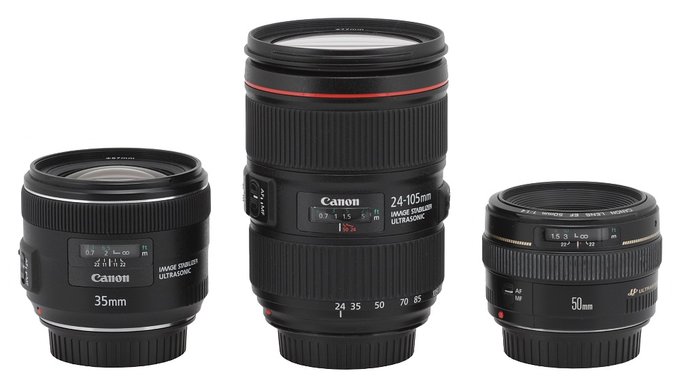 |
Please Support UsIf you enjoy our reviews and articles, and you want us to continue our work please, support our website by donating through PayPal. The funds are going to be used for paying our editorial team, renting servers, and equipping our testing studio; only that way we will be able to continue providing you interesting content for free. |
- - - - - - - - - - - - - - - - - - - - - - - - - - - - - - - - - - - - - - - - - - - - - - - -
The Canon EF 24–105 mm f/4L II USM IS starts with a metal bayonet mount which goes round a contact plate and a black 30×25 mm frame. Inside the frame you see an element 29 mm in diameter. It is situated almost on the same level as the mount at 24 mm focal length. When you pass to 105 mm it hides inside about 3 cm deep. During that process the user can admire the interior of the tube, well-blackened and properly matted, without any shiny screws, with few electronic parts which are masked quite well.
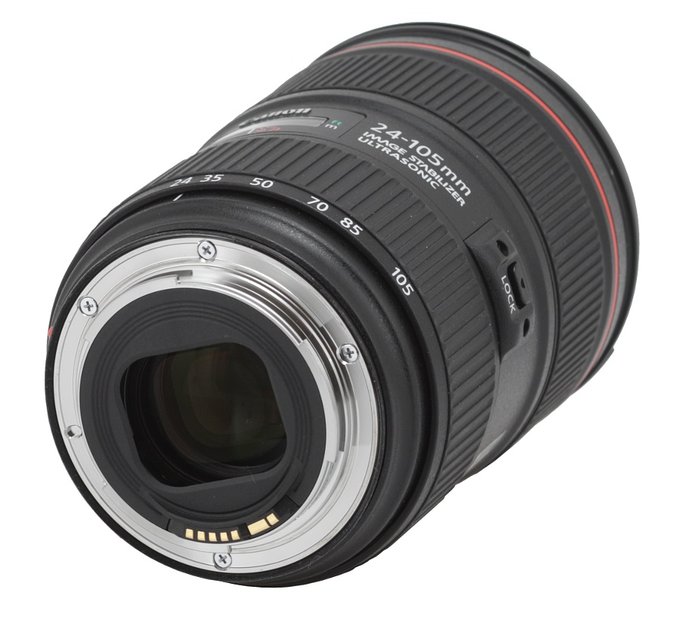 |
The proper barrel of the lens starts with a narrow stripe which doesn’t move but features a red dot making an alignment with a camera easier. A zoom ring, covered by rubber ribs and focal length marks at 24, 35, 50, 70, 85 and 105 mm is the next part. It moves evenly and is properly damped.
Further on you see a distance scale, expressed in meters and feet, behind a window. On the right side of the scale there’s an inscription stating the parameters of the lens and on the left - switches for the focusing mode (AF/MF) and optical stabilization (STABILIZER ON/OFF) control. On the side opposite to the scale you get the serial number of the lens and information that it was produced in Japan.
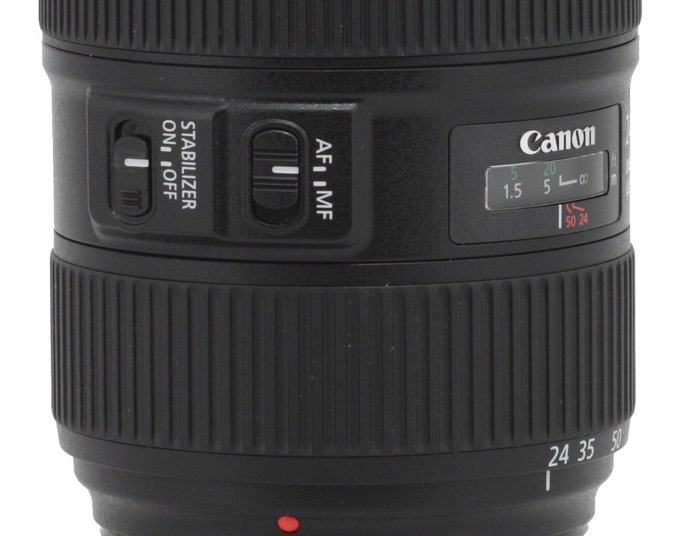 |
A manual focus ring, as wide as 31 mm, ribbed and very comfortable to use, is the next part of the barrel. It moves smoothly but is properly damped, without any slacks. Running through the whole distance scale needs a turn through an angle of about 100 degrees. It is not an especially impressive value but typical for autofocus lenses nevertheless.
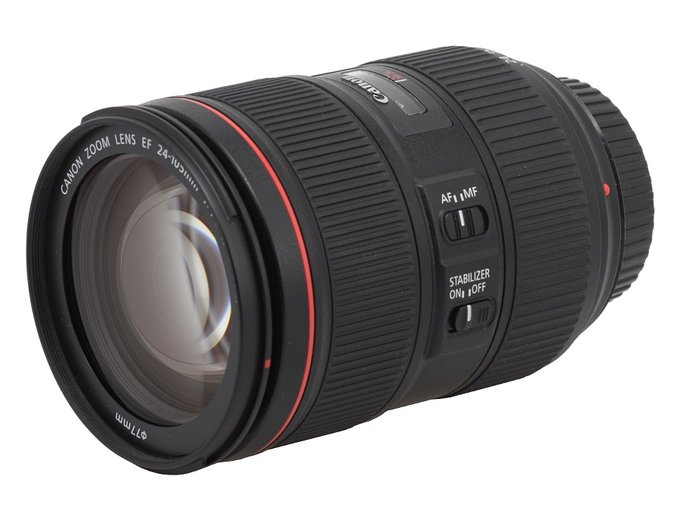 |
Behind the ring you find a red stripe, characteristic for the L series, and the lens’s barrel ends. Then there’s a front element system which is extended on a uniform, plastic tube. After passing to the 105 mm focal length the size of the lens increases by almost 4 cm.
The front element is 61 mm in diameter; an inscription stating the name and parameters of the lens goes round it along with a non-rotating filter thread, 77 mm in diameter.
When it comes to the optical construction you deal here with 17 elements positioned in 12 groups. The producer doesn’t mention any low-dispersion glass but they boast of three aspherical elements, Fluorine, and Air Sphere coatings. Inside the lens you can also find a round aperture with as many as 10 diaphragm blades which can be closed down to f/22 at the maximum.
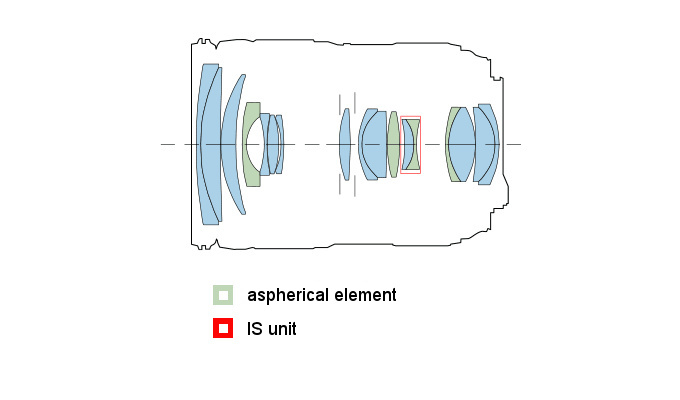
Buyers get both caps, a petal hood and a soft pouch in the box.
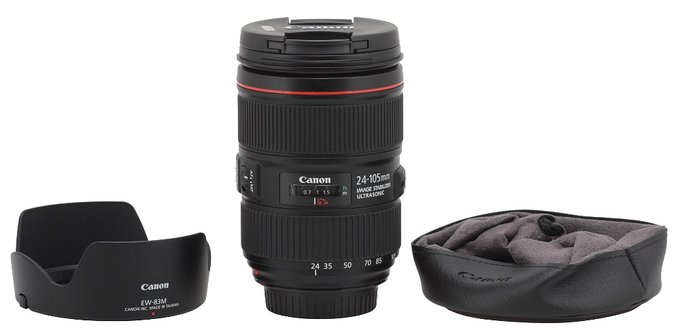 |
Optical stabilization
The Canon EF 24–105 mm f4L IS USM II is supposed to offer a stabilization unit as efficient as 4 EV, exactly the same as most of new L-series devices manufactured by that producer. Of course we wanted to check that claim. In order to do that we took several dozen of photos at 105 mm for every exposure time ranging from 1/125 to 1/2 of a second with the stabilization unit switched on and off. Then we determined a percentage of blurred photos and presented it as an exposure time function graph, expressed in EV where 0 EV is an equivalent of 1/100 of a second. An appropriate graph with the results is presented below.
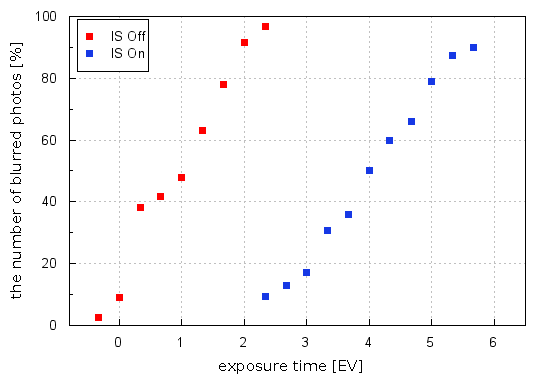
It is clear that the maximum distance between both curves reaches 3.5 EV and such is, in our opinion, the efficiency of the optical stabilization. It is a good result, noticeably better than the result of the budget Canon EF 24-105 mm f/3.5–5.6 IS STM. On the other hand we’ve seen L-series instruments whose stabilization was on a level of 4 EV or even a tad higher.






